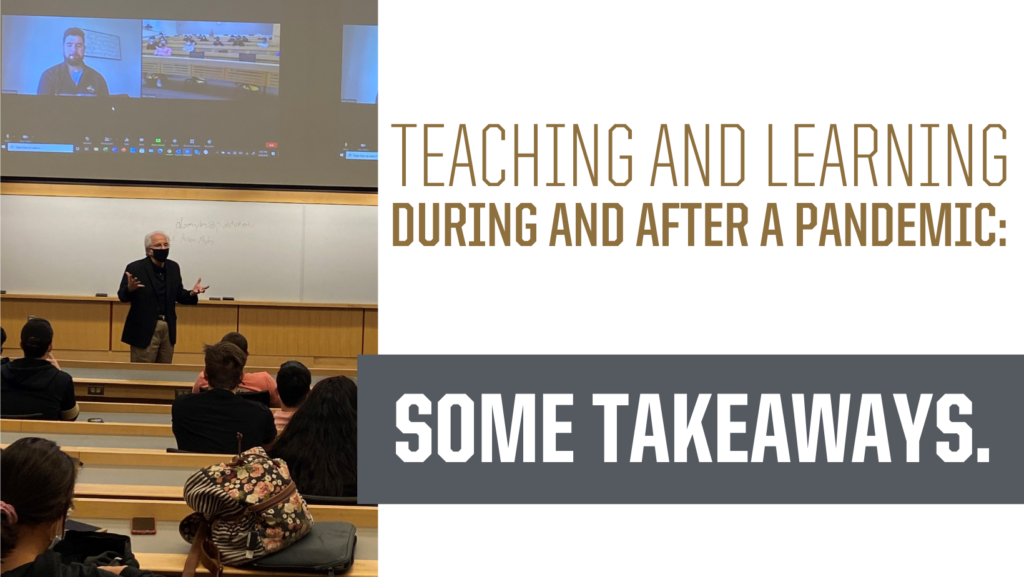Teaching and Learning During and After a Pandemic: What Entrepreneurship Instructors Will Keep and What they Won’t Miss
 Although we aren’t quite out of the woods yet with COVID-19 continuing to lurk around us, as educators we are certainly better equipped to teach students during a pandemic than we were a year ago. At Purdue, we got a crash course in remote teaching and learning last spring, but the university was one of the first in the country to commit to providing both in-person and online experience students during the 2020-21 academic year.
Although we aren’t quite out of the woods yet with COVID-19 continuing to lurk around us, as educators we are certainly better equipped to teach students during a pandemic than we were a year ago. At Purdue, we got a crash course in remote teaching and learning last spring, but the university was one of the first in the country to commit to providing both in-person and online experience students during the 2020-21 academic year.
While it certainly challenged our technological and teaching skills, there have been many positive outcomes that emerged from the disruption that will serve us well long term. For example, it catalyzed the need for us to quickly create distance versions of our entrepreneurship fundamentals courses to meet summer enrollment demand. The process of creating these online courses forced us to examine in-depth our curriculum, and revise it while incorporating years of best practices from our instructors. These activities served us well by facilitating our move to Purdue’s new learning management system, which was in the works prior to COVID. Needless to say, individually, we have all upped our game by becoming more comfortable with many technology tools that enable collaboration and discussion and expanding opportunities to bring in speakers from all over the country, and even the world. We continue to see strong demand for entrepreneurship courses and have watched entrepreneurial students self-organize using online platforms to communicate and collaborate.
I polled our dedicated entrepreneurship instructors about what they will keep going forward and what they won’t miss. Here is a summary of what they said:
What they will keep
Bringing in remote speakers. Recording lectures. Using technology to catalyze class discussion during and outside of class time. Being available online during and outside of office hours. Creating new video assignments. Being more aware of time zones.
What they won’t miss
Masks and social distancing are barriers to discussion and collaboration. Not being able to move around the classroom to stay on camera while the video is recording. Managing and uploading class videos. The lack of small group in-class collaboration. The lack of not being able to hold students accountable for attendance.
It is too early to know the long-term impacts of this period on both entrepreneurship and education. Most experts project that things will likely never go back to what is considered “normal.” Whether good or bad, the pandemic has shown students how potentially disruptive health, environmental, or technological changes can be to their everyday lives, and why they have to be adaptable in an economy and society that is ever-changing. This reinforces the need for universities to continue to expand educational and experiential programs that increase their entrepreneurial knowledge, skills, and mindset.
Needless to say, having entrepreneurial faculty and an entrepreneurial staff during a pandemic is a wonderful thing, given their flexibility, innovativeness, and resilience. But, as one instructor put it, “I’m ready to see the bottom half of everyone’s faces!”